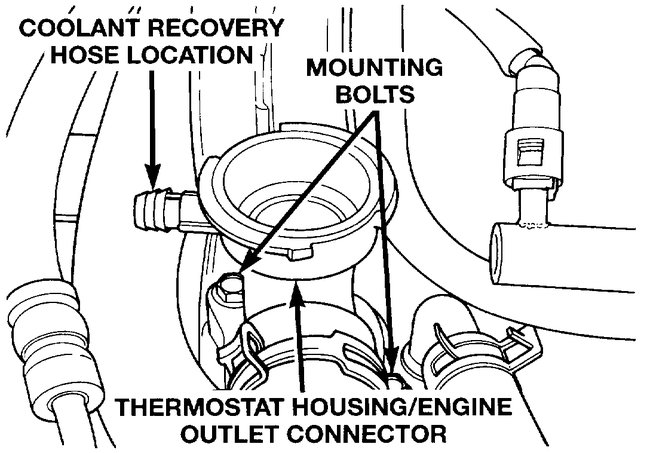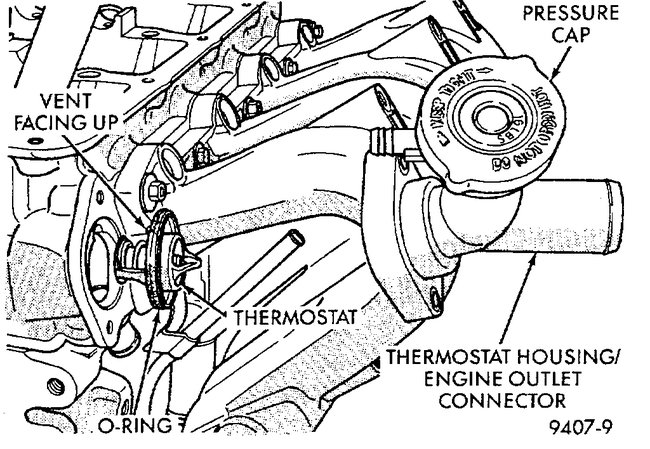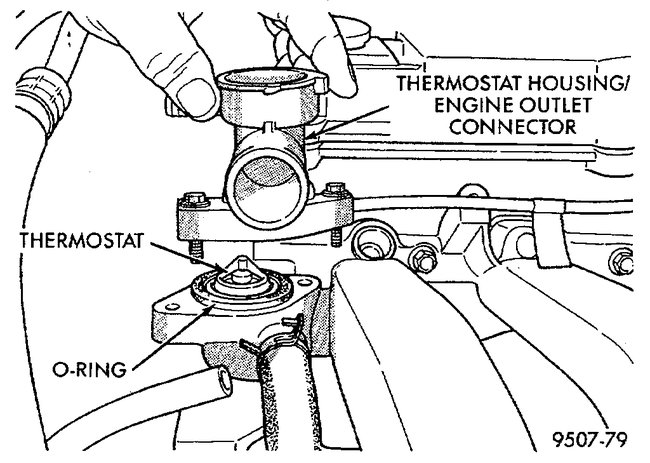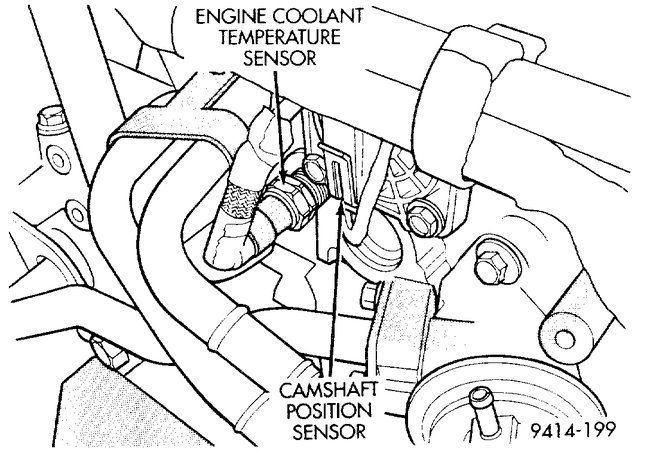Welcome to 2CarPros.
Have you checked the thermostat? It could be sticking.
https://www.2carpros.com/articles/how-an-engine-thermostat-works
https://www.2carpros.com/articles/replace-thermostat
That is my first suspect. However, if you choose to replace it, I also recommend flushing the system when it is out of the engine to eliminate that as an issue.
https://www.2carpros.com/articles/coolant-flush-and-refill-all-cars
Here are the directions specific to your vehicle. I don't know if you have the SOHC or DOHC engine, so I will provide directions for both. The attached pics correlate with the directions.
______________________________
1998 Dodge Neon L4-122 2.0L DOHC VIN Y SFI
Procedures
Vehicle Engine, Cooling and Exhaust Cooling System Thermostat Service and Repair Procedures
PROCEDURES
REMOVAL
1. Drain cooling system to the thermostat level or below.
Thermostat/Engine Outlet Connector-DOHC
Pic 1
2. Remove Coolant Recovery System (CRS) hose and thermostat/engine outlet connector bolts.
3. Remove thermostat an O-ring assembly, and clean sealing surfaces.
INSTALLATION
1. Place the new thermostat assembly into the thermostat housing/outlet connector. Align vent with notch in cylinder head.
2. Install thermostat housing/outlet connector onto cylinder head and tighten bolts to 12.5 Nm (110 inch lbs.). Connect the Coolant Recovery System (CRS) hose.
3. Refill cooling system (see Refilling System).
________________________________
1998 Dodge Neon L4-2.0L VIN C
Procedures
Vehicle Engine, Cooling and Exhaust Cooling System Thermostat Service and Repair Procedures
PROCEDURES
Removal
1. Drain cooling system to the thermostat level or below.
Thermostat/Engine Outlet Connector - 2.0L Engine
Pic 2
Thermostat And Engine Outlet Connector - 2.4L Engine
Pic 3
2. Remove Coolant Recovery System (CRS) hose and thermostat engine outlet connector bolts.
3. Remove thermostat assembly, and clean sealing surfaces.
Installation
1. Place the new thermostat assembly into the engine outlet connector. Align air bleed with notch on the cylinder head.
2. Install engine outlet connector onto cylinder head and tighten bolts to 12.5 Nm (110 inch lbs.). Connect the coolant recovery system (CRS) hose.
3. Fill cooling system.
_______________________________________
Let me know if this helps.
Take care,
Joe
Images (Click to make bigger)
Wednesday, September 11th, 2019 AT 7:10 PM






